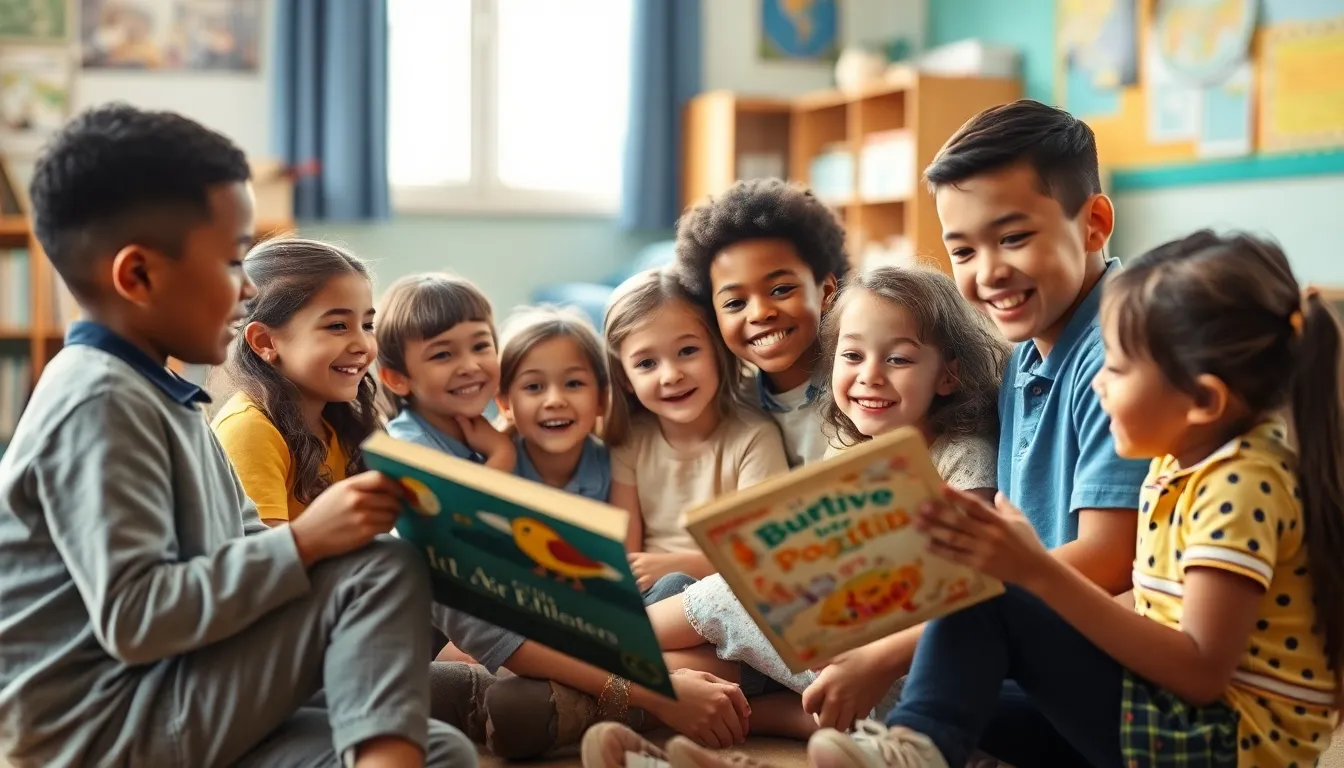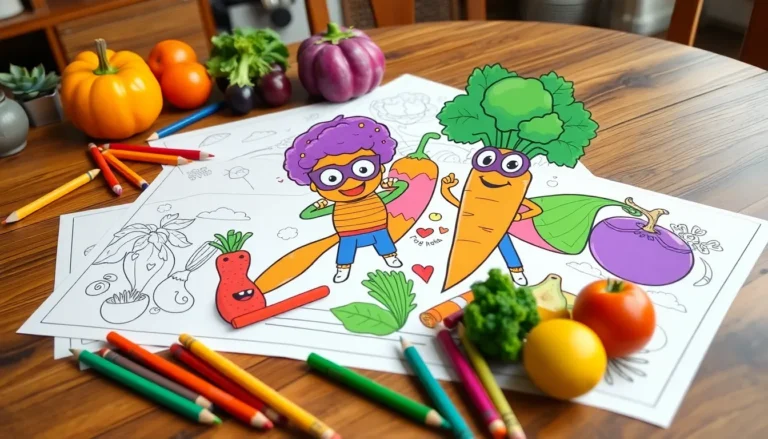Literacy milestones are like the stepping stones of a child’s journey into the world of words. These moments mark when kids begin to decode the mysteries of language, transforming squiggly lines into stories that spark their imagination. From the first time they sound out “cat” to confidently reading their favorite book, these milestones are crucial in shaping their future.
Table of Contents
ToggleUnderstanding Literacy Milestones
Literacy milestones mark crucial developmental stages in a child’s reading and writing journey. These milestones help track progress and identify areas needing support. Key areas of focus include phonemic awareness, vocabulary growth, and comprehension skills.
Children typically recognize letters and their sounds by age four. This foundational knowledge allows them to sound out simple words. By age five, early readers may attempt to write their names and other familiar words. Building on this, six-year-olds often begin to read short sentences with guidance.
As children approach age seven, they may read independently. At this stage, engagement with various texts enhances their vocabulary. With every book read, children expand their understanding of language structures.
By age eight, children often enjoy reading for pleasure. They select books that match their interests, which significantly impacts their motivation. Comprehension skills continue to deepen as they learn to summarize stories and make predictions about upcoming events.
Observing these milestones provides valuable insight into a child’s reading level. Teachers and parents can use this knowledge to encourage further growth. When challenges arise, targeted strategies can help advance skills and confidence.
Tracking progress through these key literacy milestones fosters a lifelong love for reading. Supporting children in reaching these milestones sets the stage for academic success and personal enjoyment of literature.
Importance of Literacy Milestones

Tracking literacy milestones plays a critical role in a child’s overall development. These benchmarks not only guide educators and parents but also ensure that children progress in their reading and writing abilities.
Cognitive Development
Cognitive progress often hinges on literacy milestones. Recognizing letters and sounds enhances memory and analytical skills. Children who read at an early age acquire vocabulary that enriches their comprehension abilities. They understand concepts and context beyond mere letters. Engaging with texts fosters critical thinking and problem-solving strategies. A focus on these milestones facilitates structured learning experiences around decoding words and interpreting stories, bolstering cognitive growth from their early years.
Social Skills
Social interactions frequently improve through literacy achievements. Communication skills develop as children share stories and discuss characters, helping them navigate social situations. Reading groups or book clubs provide opportunities for collaboration and teamwork. Children learn to articulate thoughts and engage in discussions about narratives, which nurtures empathy and understanding. Achieving literacy milestones can pave the way for forming friendships, enhancing their ability to connect with peers over shared interests in literature.
Age-Specific Literacy Milestones
Children reach significant literacy milestones at various ages, marking key developmental moments in their reading and writing journey.
Early Childhood (0-5 Years)
Between ages zero and five, children begin their literacy development. Infants benefit from hearing language, often responding to the rhythm and sounds of speech. By age two, they may recognize familiar words and phrases. Around age three, vocabulary expands significantly, and children start to understand that letters represent sounds. At four, most can identify letters and match them to their sounds. By age five, writing attempts often include their names, showcasing their growing understanding of the written word. Engaging with picture books during this period fosters imagination and comprehension.
Elementary School (6-12 Years)
In elementary school, the focus shifts to developing independent reading skills. At age six, children often read short, simple sentences with assistance. By age seven, many start reading independently, increasing their vocabulary by exploring a variety of texts. By eight years old, most children engage in reading for enjoyment, often choosing books matching their personal interests. With this growth, comprehension skills deepen, allowing students to discuss stories and characters more thoughtfully. By age eleven, they typically connect ideas across different texts, enhancing critical thinking and analytical abilities.
Middle School and Beyond (13+ Years)
In middle school and beyond, literacy skills continue to evolve. At thirteen, adolescents read for deeper understanding, often analyzing themes, motives, and styles. By this age, they engage with diverse genres, contributing to their ability to express complex ideas. Many begin writing essays, where structure and argumentation play significant roles. During high school years, students often refine critical reading and writing skills, preparing for academic and career-oriented communication. Through robust engagement with literature, they develop a personal voice and perspective, enabling them to navigate both academic and social discussions with confidence.
Supporting Literacy Development
Supporting literacy development involves creating rich language experiences in both home and educational settings. Engaging early in a child’s reading journey fosters essential skills and confidence.
Home Environment
A nurturing home environment enhances literacy development. Parents and caregivers can read aloud daily, introducing new vocabulary and storytelling techniques. Providing access to diverse books encourages exploration and a love for reading. Additionally, creating designated reading spaces can invite children to immerse themselves in literature. Simple conversations about stories deepen comprehension and stimulate critical thinking. Regularly visiting libraries can expand children’s exposure to various texts and authors. Participation in literacy-rich activities promotes shared experiences and strengthens bonds.
Educational Strategies
Classroom strategies significantly support literacy growth. Teachers can utilize guided reading sessions to help children decode texts at appropriate reading levels. Whole-class discussions allow students to share insights and develop communication skills. Incorporating interactive lessons that emphasize phonics and vocabulary expands understanding. Differentiated instruction accommodates diverse learning styles, ensuring all students progress. Regular assessments help tailor approaches to individual needs, guiding effective interventions. Collaborative projects that involve writing and presenting enhance literacy engagement while fostering teamwork.
Literacy milestones are vital in shaping a child’s reading and writing journey. By recognizing and supporting these key moments, parents and educators can foster essential skills that contribute to a child’s overall development.
Creating nurturing environments and engaging in meaningful literacy activities not only enhances cognitive abilities but also builds communication skills. As children progress through these milestones, they develop a love for reading that can last a lifetime.
It’s crucial to remain attentive to each child’s unique path and adapt strategies to meet their needs. With the right support, children can thrive in their literacy journey, unlocking the doors to a world of knowledge and imagination.





